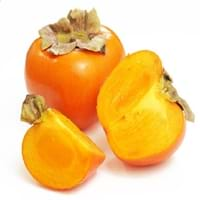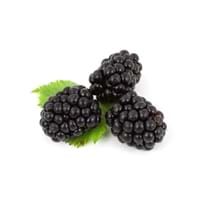Health Benefits
Anti-oxidant properties, Beneficial in curing fever, Cancer prevention, Heart care, Reduces nervous tension
Cancer prevention, Heart care, Increases metabolic rate, Reduces stress, Treatment of dysentary, Treatment of skin Diseases
General Benefits
Anti-inflammatory properties, Boosts immune system, Controls blood pressure, Digestive aid, Eye care, Fights against infections, Helps in weight loss, Improves blood circulation
Digestive aid, Maintains healthy cholesterol level, Strengthens bones
Skin Benefits
Anti-aging benefits, Brightens and lightens complexion, Reduces wrinkles
Hydrates skin, Skin rejuvenation, Skin revitalization
Hair Benefits
Good conditioner, Promotes longer and healthier hair, Treatment of dandruff
Promotes longer and healthier hair
Allergy Symptoms
Abdominal pains, Anaphylaxis, Inflammation
Facial muscle tension, Pressure in sinus, Respiratory congestion, Runny nose, Sneezing, Tingling sensation in wrist and face
Side Effects
Affects blood glucose levels, Decrease in blood sugar levels, Coagulation
Nausea, Vomiting, Might cause change of urine color
Best Time to Eat
Along with meal, As a snack in the late afternoon, Don't consume at night and before bed, Eat the fresh ones, avoid mixing with any other foods, don't eat after meal.
Best if taken as a breakfast (or empty stomach), As a snack in the late afternoon, Don't consume at night and before bed, Eat the fresh ones, avoid mixing with any other foods, don't eat after meal., Morning time (before lunch)
Vitamin A (Retinol)
Not Available
Vitamin B1 (Thiamin)
Not Available
Vitamin B2 (Riboflavin)
Not Available
Vitamin B3 (Niacin)
Not Available
Vitamin B5 (Pantothenic Acid)
Not Available
Vitamin B6 (Pyridoxin)
Not Available
Vitamin B9 (Folic acid)
Not Available
Vitamin C (Ascorbic Acid)
Vitamin E (Tocopherole)
Not Available
Vitamin K (Phyllochinone)
Not Available
Lutein+Zeaxanthin
Not Available
Calories in Fresh Fruit with Peel
Calories in Fresh Fruit without Peel
Not Available
Not Available
Calories in Frozen Form
Not Available
Calories in Canned Form
Not Available
Calories in Pie
Not Available
Type
Berry, Tree fruit
Berry
Season
Autumn, Winter
Spring, Summer
Varieties
Early Golden, John Rick, Miller, Woolbright and Ennis
Prime Ark, Prime Jim, Illini Hardy, Kiowa, Shawnee, Apache, Arapaho, Chester, Hull, Natchez, Navaho and Triple Crown and Von
Color
Orange, Red, Yellow
Purplish black
Inside Color
Yellow
Magenta
Origin
Eastern United States
Asia, Europe, North America, South America
Soil Type
Sandy loam, Well-drained
Well-drained
Climatic Conditions
Can tolerate wide range of climates, Sunny
Dry, Warm to hot climate
Facts about
- It is said that formation of seeds inside the persimmon fruit shows what type of winter is coming(type of snow).
- There are about 2000 varieties of this fruit.
- The American persimmon has another name 'Possumwood'.
- There are around 2000 varieties of blackberries throughout the world.
- 80-85 degrees is the ideal temperature for its production.
- Leaves of blackberry tree are used to treat sore throats and mild inflammation of the gums.
Top Producer
China
United States of America
Other Countries
Azerbaijan, Brazil, Costa Rica, Japan, Korea, Pakistan
China, New Zealand, Serbia, South Africa
Top Importer
United States of America
United States of America
Top Exporter
United States of America
Mexico
Botanical Name
Diospyros virginiana
Rubus Fruticosus
Synonym
Not Available
Rubus Millspaughii or Rubus Laciniatus
Subkingdom
Tracheobionta
Tracheobionta
Division
Magnoliophyta
Magnoliophyta
Class
Magnoliopsida
Magnoliopsida
Subclass
Dillenhidae
Rosidae
Family
Ebenaceae
Rosaceae
Species
D. virginiana
Rubus fruticosus
Generic Group
Not Available
Rose
Difference Between American Persimmon and Blackberry
We might think that American Persimmon and Blackberry are similar with respect to nutritional value and health benefits. But the nutrient content of both fruits is different. American Persimmon and Blackberry Facts such as their taste, shape, color, and size are also distinct. The difference between American Persimmon and Blackberry is explained here.
The amount of calories in 100 gm of fresh American Persimmon and Blackberry with peel is 127.00 kcal and 43.00 kcal and the amount of calories without peel is Not Available and Not Available respectively. Thus, American Persimmon and Blackberry belong to and category.These fruits might or might not differ with respect to their scientific classification. The order of American Persimmon and Blackberry is Ericales and Rosales respectively. American Persimmon belongs to Ebenaceae family and Blackberry belongs to Rosaceae family. American Persimmon belongs to Diospyros genus of D. virginiana species and Blackberry belongs to Rubus genus of Rubus fruticosus species. Beings plants, both fruits belong to Plantae Kingdom.









